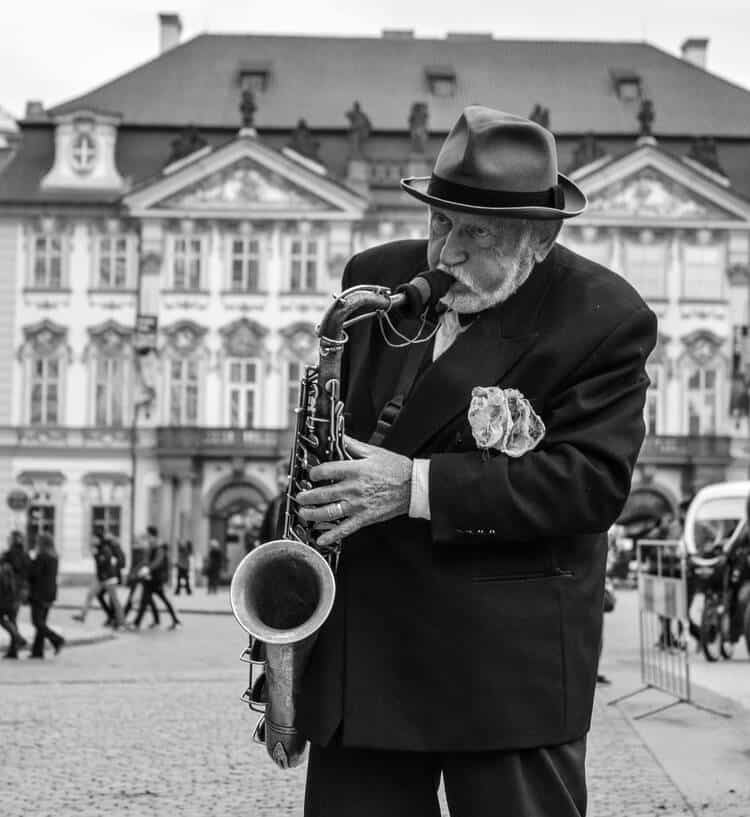Popularized by author F.Scott Fitzgerald in his book The Great Gatsby, the jazz age was a time when jazz music and dance styles gained momentum in the 1920s and 1930s in the United States.
Jazz originated in New Orleans from the culture of the African Diaspora and spread throughout America. It became more popular when white jazz musicians emerged despite their roots in African American culture.
In 1925, amid the jazz age, several events occurred that helped spread its popularity across states. These events were:
- Duke Ellington and Louis Armstrong first recorded their music
- The Phantom of the Opera started performing in movie theaters
- The Great Gatsby novel became popular among the youth
- John Scopes defied Tennessee law and taught Darwin’s theory of evolution, leading to a lawsuit against him.
- Ku Klux Klan marched on Washington, DC.
The jazz age was when the youth rebelled against the traditional culture and wanted to explore new and unpopular ways of thinking, feeling, and behaving. Let’s discuss how these factors became a reality.
When Was the Jazz Age?

The jazz age began after the great migration occurred around 1915 to 1920. The African Americans escaped oppression from the rural south and moved to the northern cities. The sudden influx of African Americans to the city brought jazz culture, including famous musicians such as Louis Armstrong.
The freedom these immigrants enjoyed in the North led to the emergence of the jazz age and the party culture. The Roaring Twenties followed, which sped up the spread of the jazz culture and creativity because:
- More people lived in cities compared to rural areas
- Increased mass production of automobiles
- People had disposable income
- Jazz music became more popular with the emergence of radio and recordings
- People experienced social freedom, including women
Conservative Americans felt threatened by the changing society, and the Prohibition Era began in 1919 to 1933; the importing and selling of alcohol was prohibited. The law was meant to reduce the emerging jazz age, but it had the opposite effect. People would drink alcohol and listen to jazz in illegal saloons and speakeasies. This phenomenon made the jazz age more intriguing to the youth.
Why is It Called the Jazz Age?
The period between the 1920s to 1930s is called the jazz age because the societal, religious, and lifestyle changes coincided with the rise of jazz culture and music. The rebellious youth listened heavily to jazz and used the music to express their desire for change.
As F. Scott Fitzgerald puts it in his book, the jazz age was a period when “the parties were bigger, the pace faster, the building higher, and the morals looser.”
Jazz music also transcended the limitations of African American music when the radio mass recording became popular. Radio stations expanded their reach and played jazz music nationwide, and this new style of music took over America.
The foundation of jazz lies in the African American form of self-expression and unique artistic creation that moved from the traditional music styles. This change moved across racial lines, and the white middle-class youth used it as a vital part of their new lifestyle. The jazz age was the preferred name of choice because of its overall influential capabilities.
What is Significant About the Jazz Age?
The jazz age is one of the most progressive periods in American history that enabled the youth to break free from traditional ways of life. It led to American youth culture transformation with the rise in alcohol consumption, music, dance, extravagant parties, and general euphoria.
The Jazz Age also gave rise to the Flapper; these young women became empowered after world war I when they realized they could perform the same jobs as men. Independent women became bold to engage in behavior considered outrageous for women because they were considered only suitable for men. Women began to smoke, dance in public, and consume alcohol. Others wore short skirts, partied in jazz clubs, and had short bob hair cut.
In addition, the jazz age also redefined the role of African Americans; they carved out their place in the entertainment industry and gained prestige and wealth. They were also allowed to mingle with the whites and had relative access to cultural spaces reserved for whites only.
Do you want to experience the high spirits and boldness that jazz music brought during the jazz age? Arthur’s Tavern is the bar of choice. We are situated in a historic building and play live jazz and blues music while giving you exceptional services.